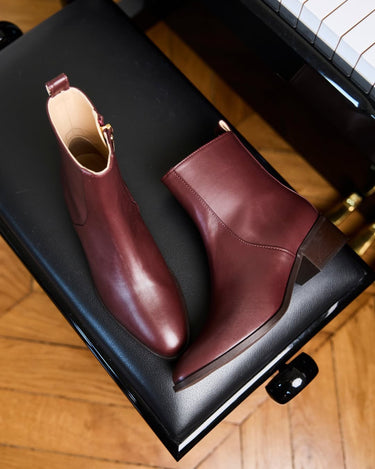Is Your Wardrobe Contributing to Droughts?
As temperatures soar throughout the world, we're once again reminded of just how scarce water – a resource most of us take for granted – really is. Heatwaves are prompting severe droughts in countries across Europe, including France, Greece, Italy, England, Romania and more. In Africa, droughts are driving hunger in areas like Kenya, Somalia, and Ethiopia. Droughts are another aspect of the climate crisis – one that has a devastating impact on the planet, humans, and animals. And fashion is not innocent in all of this.
By Sascha Camilli: writer, speaker, activist, and vegan fashion expert.
The garment industry is one of the most polluting ones in the world, and water waste is one of the main ways in which our shopping puts a strain on our planet. In 2017, the water consumed by the fashion industry was nearly 79 billion cubic metres – enough to fill 32 Olympic-sized swimming pools. The Global Fashion Agenda, alongside the Boston Consulting Group, estimate that fashion's water use will increase by 50% by 2030. In short, the garment industry is extremely thirsty.
Fashion's extreme water use is largely due to the frequent use of cotton. One of the most popular materials in fashion, cotton is often touted for its quality, breathability, and yes – sustainability. But cotton is possibly the thirstiest fabric in fashion, with anywhere from 7,000 to 29,000 litres needed to produce just one kg of the raw fibre. The irrigation needed to grow cotton crops depletes natural supplies, which may take many years to replenish. And raw fibre is not the end of the road: like other fibres, cotton also needs to be spun, dyed and otherwise processed – which, once again, takes immense quantities of water. These processes also pollute nearby waterways, impacting the water supply and the health of the residents.

But cotton isn't the only villain when it comes to fashion's water problem. Animal agriculture is a leading cause of the climate crisis in general, and water waste in particular: raising billions of animals every year for humans to consume requires incredible quantities of water, from drinking water to what's needed to clean factory farms and slaughterhouses. And fashion needs to pause to think that animal agriculture is more than meat: leather is very much part of the problem. Circumfauna found that the production of a cow-skin handbag can require up to 17,128 litres of water, a lot of this coming from the tanning process – but a large portion also derived from the raising of cattle. So “vegetable tanning” and various “sustainable” tanning methods do little to mitigate leather's water problem.
Alongside leather, wool is another culprit – it takes approximately 500,000 litres of water to make a metric ton of the material. Just like with leather, this goes to drinking water for the animals, as well as cleaning the facilities involved, plus cleaning the fibres. Once again, we are reminded of the devastating effect that animal-derived fabrics have on the environment.
How to solve fashion's thirst issue? Once again, it comes down to mindful buying. Choosing organic cotton goes a long way towards minimising your own footprint, as organic farming uses rainwater to irrigate the crops, which also helps improve soil health. “We use organic cotton where we can in our collection,” says Martin Parker, co-founder and creative director of sustainable menswear label Cut & Pin. “One of the biggest benefits of using organic is the reduced environmental impact cotton has on our planet. It uses far less water and relies more on rain water."
Prolonging the lifespan of your clothing is another great way to minimise the water – and other resources – used in making new clothing. Take care with following the instructions on the label and treat your clothes like the good friends they are. Make memories with your clothes instead of rushing towards the next trend.
Of course, avoiding animal-derived fabrics will always be a good way to minimise the environmental impact of our clothing. Steering clear of wool, leather and other fabrics that come from slaughterhouses and factory farms will help minimise not only water use, but also the use of toxic chemicals and emissions of greenhouse gases. All in all, fashion benefits from going vegan in multiple ways. In the current state the industry and the planet are in, we really cannot afford to wait – the next drought could be around the corner, and the way to avoid it just might be in our wardrobes.
By Sascha Camilli
About Sascha
Sascha Camilli is a vegan fashion writer, speaker and activist. Her book Vegan Style is out now on Murdoch Books. For more about Sascha, you can read our interview with her. You can also follow her on Instagram, Twitter and LinkedIn.
Cover image by Karl Wiggers via Unsplash. Second photo by Cut & Pin
For more great content like this in your inbox, sign up to our newsletter, and save 10% off your next purchase, plus great savings throughout the year.
Related Articles


















































































































